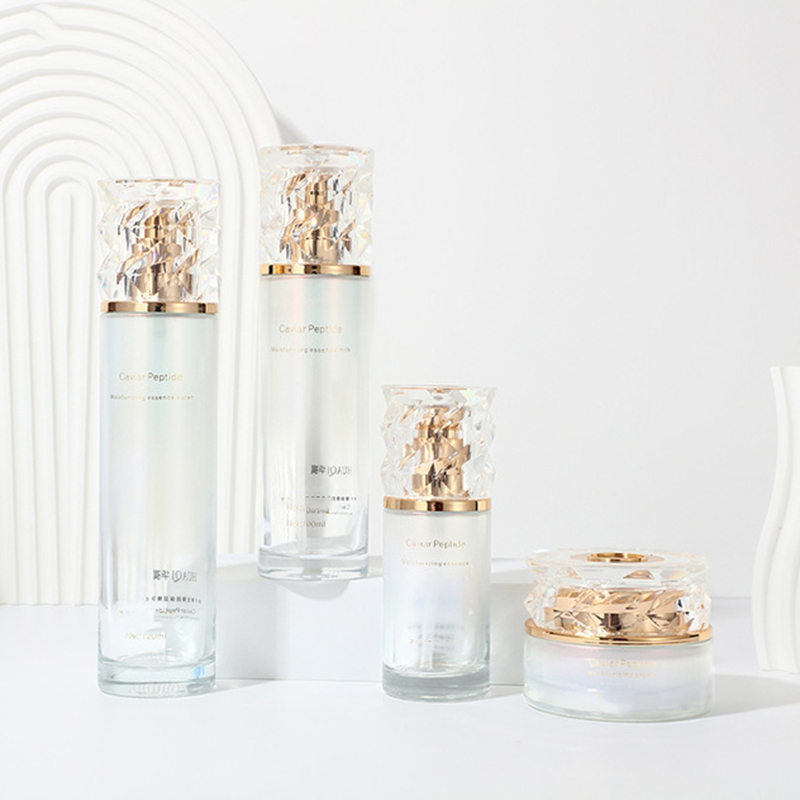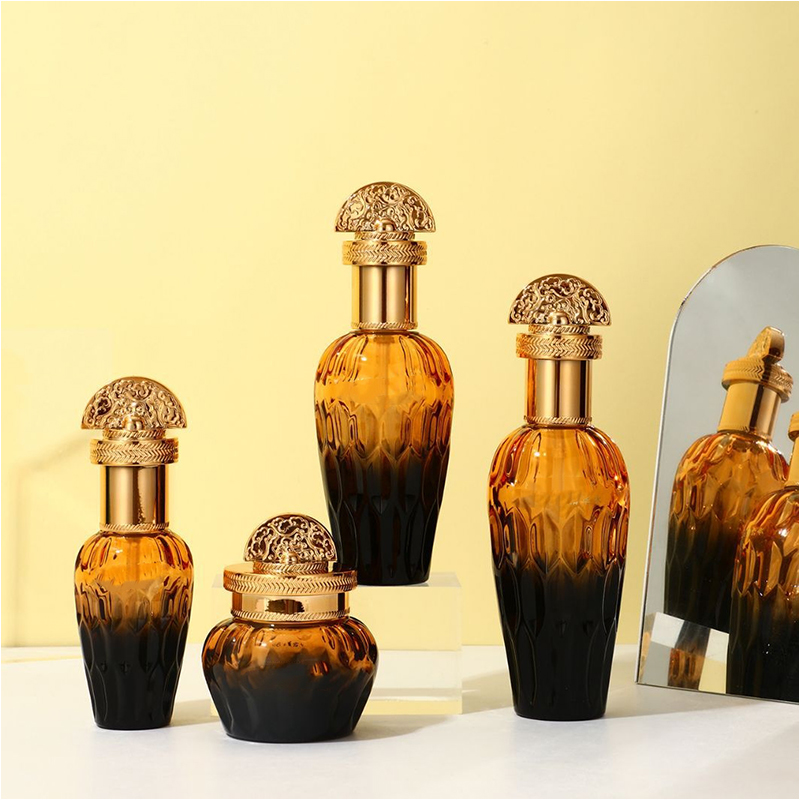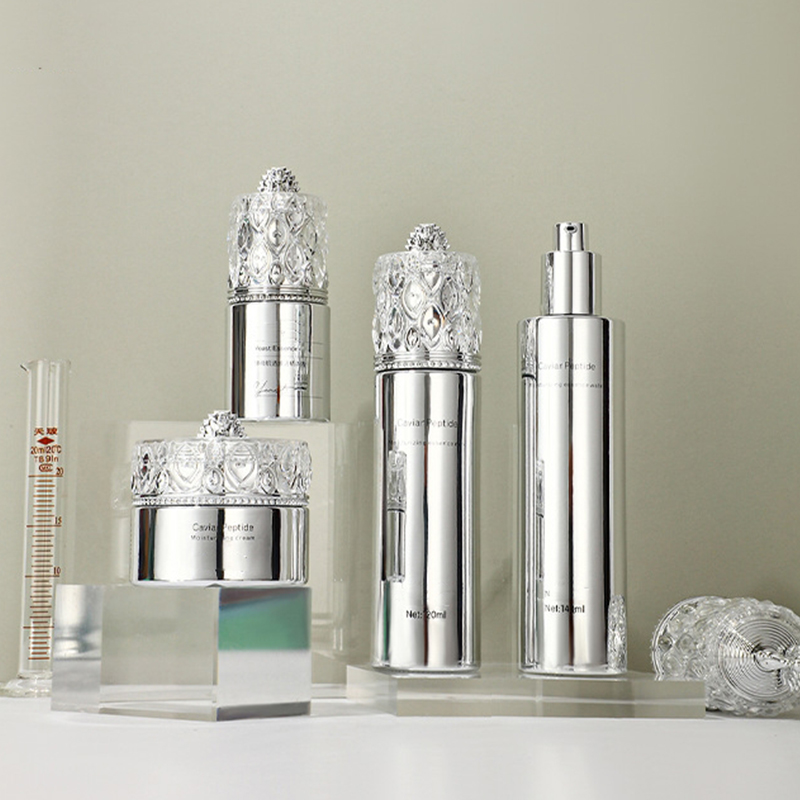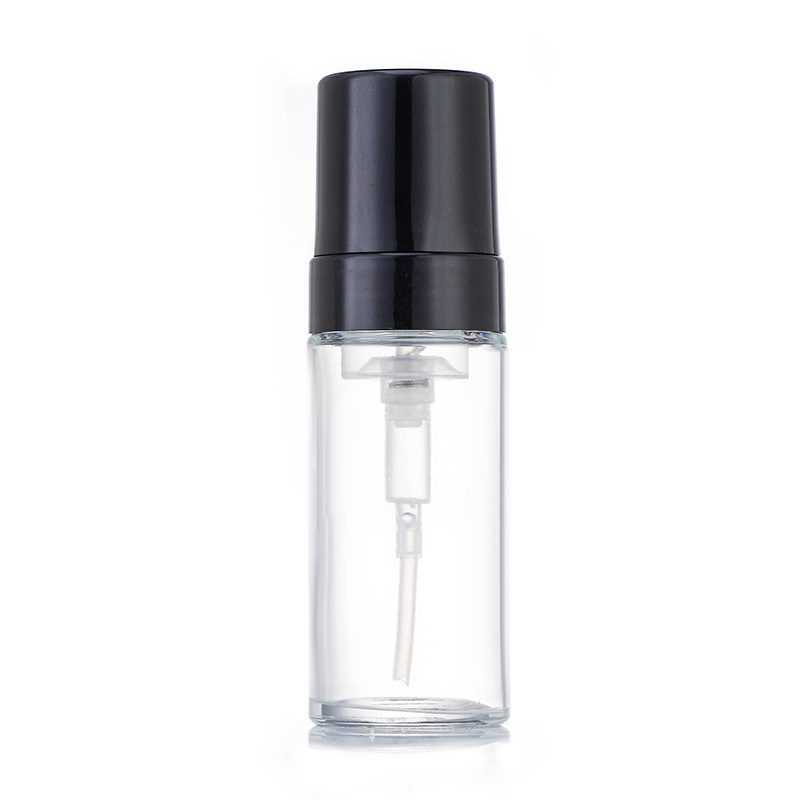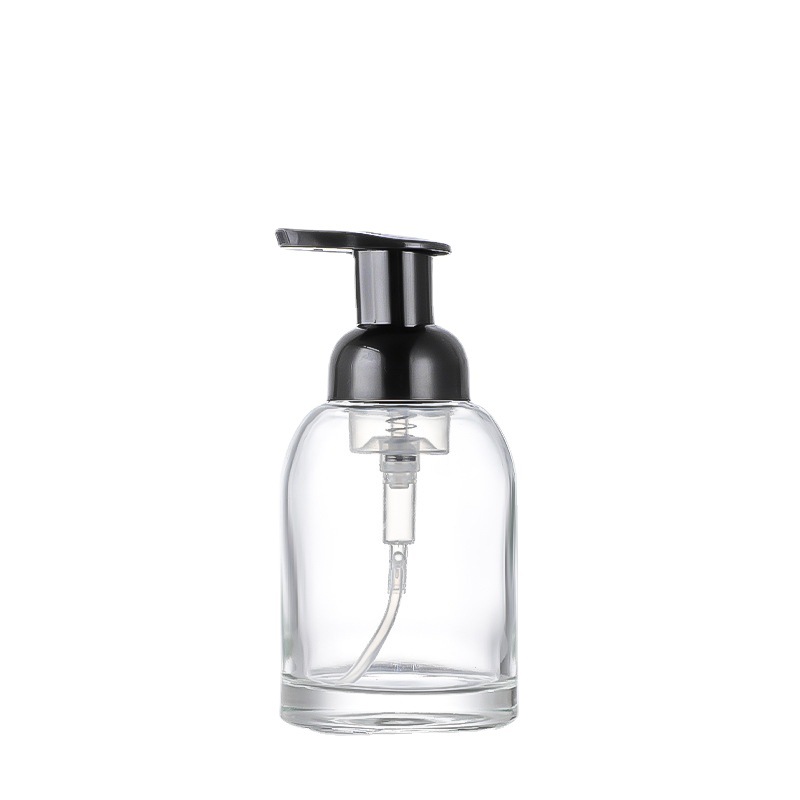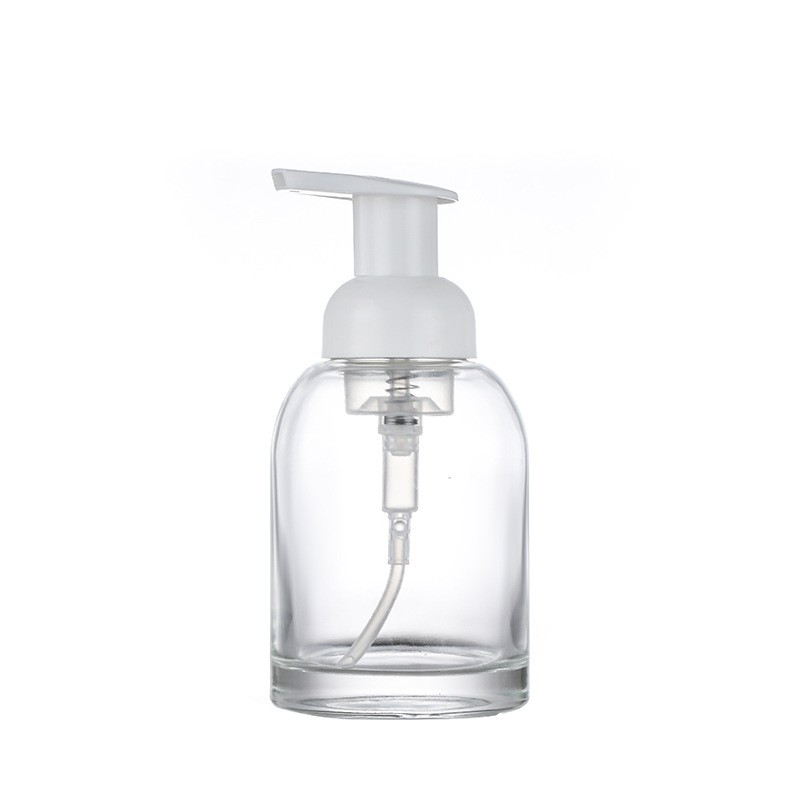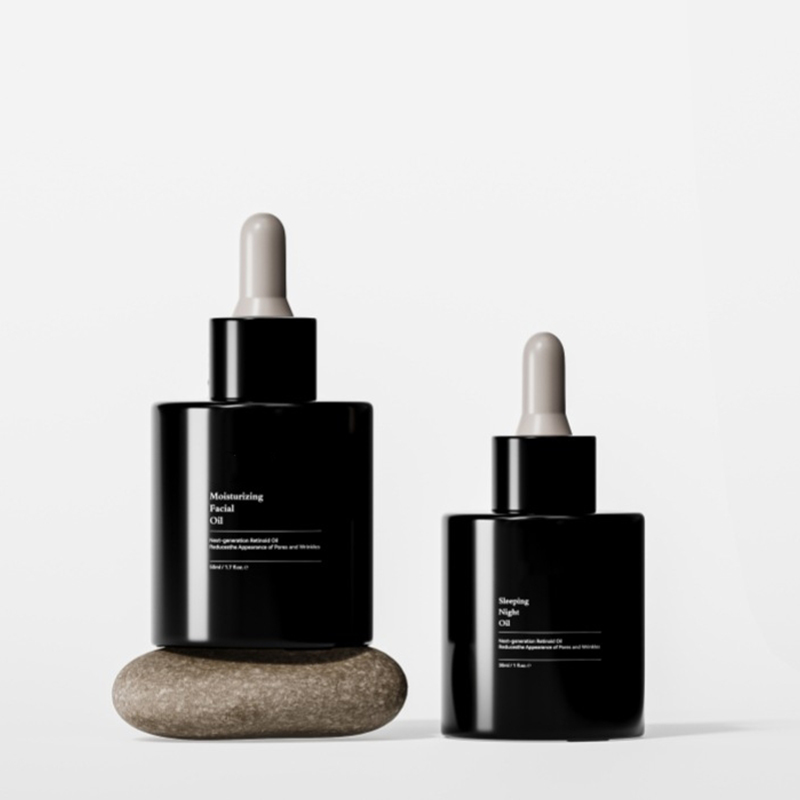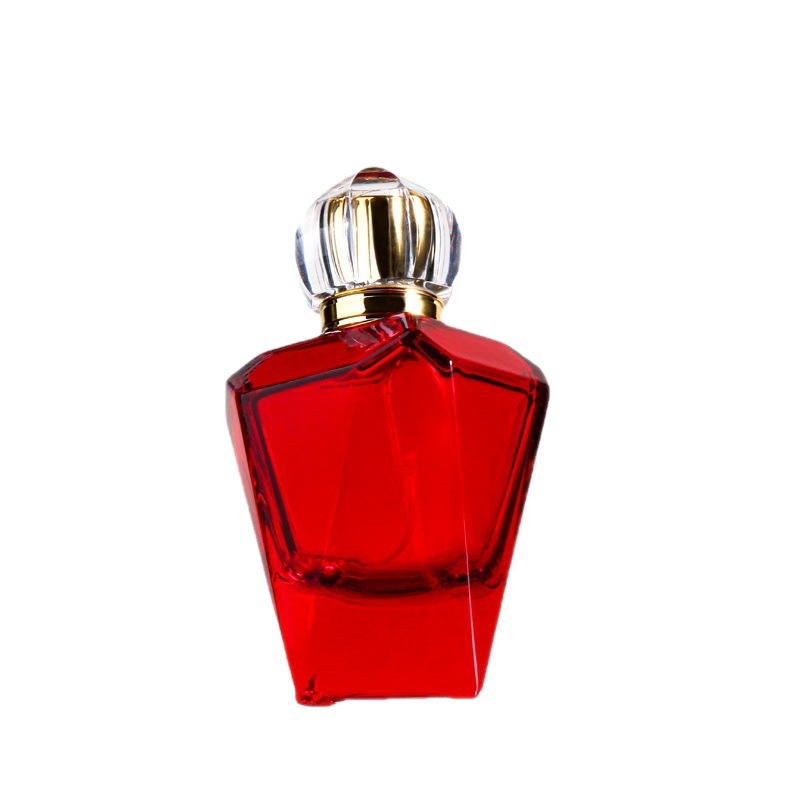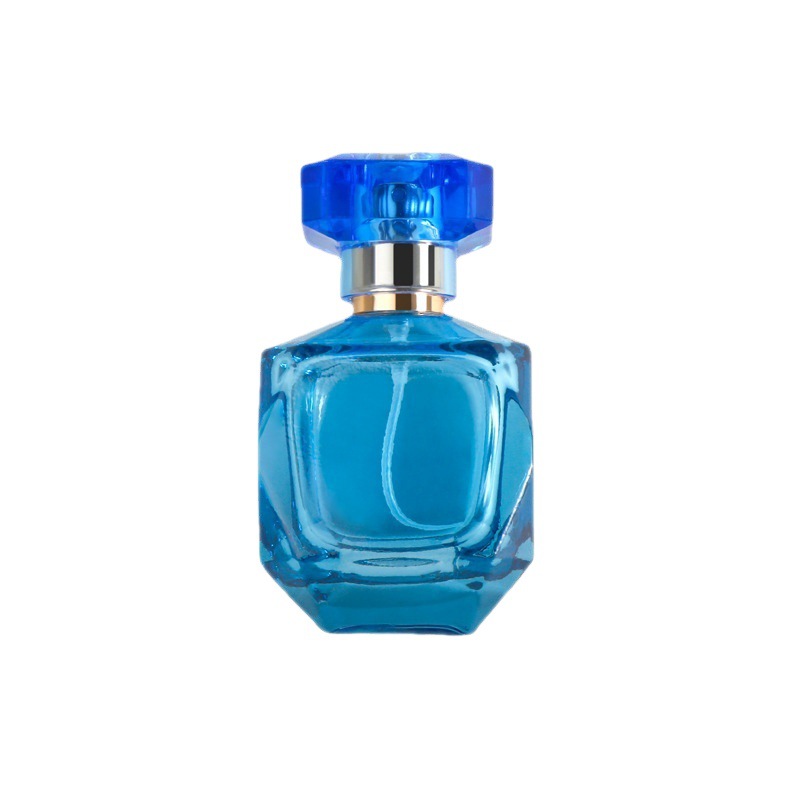What are the advantages and disadvantages of glass cosmetic bottles compared with plastic bottles in cosmetic packaging?
Advantages of glass cosmetic bottles
High-end feeling and brand image enhancement
glass cosmetic bottles, with their transparent texture and high weight, give consumers a luxurious and pure visual and tactile experience. Many high-end skin care and perfume brands prefer to use glass cosmetic bottles to enhance brand grade and consumer trust. In contrast, although plastic bottles are practical, they have a weak texture and are not easy to convey a sense of luxury.
Excellent chemical stability
Glass is an inert material that rarely reacts chemically with the contents. It can effectively prevent the deterioration and volatilization of active ingredients such as flavors and oils, and ensure the purity and shelf life of the product. Due to the material structure, plastic bottles may have the risk of reacting with the contents and migrating harmful substances, especially in long-term storage or high temperature environments.
Better environmental protection attributes
Glass cosmetic bottles are 100% recyclable and can be recycled many times, and will not produce microplastic pollution due to decomposition. Today, with the improvement of environmental awareness, more and more consumers and brands tend to use more environmentally friendly packaging materials. In contrast, plastic bottles have a low recycling rate and a long decomposition time, which puts a heavy burden on the environment.
Good barrier properties
Glass has excellent oxygen and water barrier properties, which can effectively prevent air and moisture from entering the bottle, extend the shelf life of the product, and keep the active ingredients stable. Although plastic bottles can also achieve a certain degree of barrier, their overall performance is difficult to surpass glass.
Disadvantages of glass cosmetic bottles
Fragile and high transportation costs
Glass is brittle and easy to break, especially during logistics and transportation, it requires additional cushioning packaging, which increases costs and risks. Plastic bottles are more suitable for long-distance transportation and daily carrying because of their strong toughness and unbreakable properties.
Heavy weight affects the user experience
glass cosmetic bottles are usually heavier than plastic bottles, which not only increases transportation energy consumption, but also makes consumers feel burdened when using them, especially for large-volume products.
Design and processing limitations
The molding process of glass cosmetic bottles is complex, and the diversity of styles and shapes is limited. Shaoxing Roman Plastic Co., Ltd., as a plastic packaging manufacturer with more than 50 injection molding machines and multiple assembly lines, can flexibly customize various bottle shapes and surface processes through injection molding technology, such as spraying, UV coating, screen printing, hot stamping and labeling, etc., greatly meeting customers' needs for packaging innovation and personalization.
Relatively high cost
The manufacturing cost of glass cosmetic bottles is higher than that of plastic bottles, especially in large-scale production, where the raw material and transportation costs are more significant. For brands pursuing cost-effectiveness, plastic bottles are a more economical choice.
How to ensure that glass cosmetic bottles avoid bubbles and cracks during production
Causes of bubbles and cracks in glass cosmetic bottles
Bubbles appear in the production process of glass cosmetic bottles mainly because gas is mixed into the raw materials when they are melted, or gas is not discharged in time during molding and cooling, resulting in gaps inside the bottle. Cracks are mostly caused by uneven cooling of glass, excessive internal stress or improper process operation.
Specific causes include:
Unstable raw material quality: impurities or moisture are entrained in the glass melt, which is easy to form bubbles.
Improper melting temperature control: Too high or too low temperature may lead to bubble generation and unstable glass structure.
Mold design defects: mold exhaust is not smooth, gas cannot be discharged smoothly.
Uneven cooling speed: glass thermal stress is concentrated, resulting in crack formation.
Improper transportation and storage environment: mechanical vibration or large temperature difference causes cracks.
Shaoxing Roman Plastic Co., Ltd.'s attention and inspiration on glass bottle quality
Although Shaoxing Roman Plastic Co., Ltd. mainly focuses on the design and manufacture of plastic packaging, its many years of industry experience and strict quality control system provide valuable reference for the quality management of glass packaging. The company is located in Shangyu, Zhejiang, close to the two major international ports of Ningbo and Shanghai. It has a modern production base of 13,000 square meters, more than 100 employees, more than 50 advanced injection molding machines and 15 automated assembly lines, ensuring efficient and accurate production processes.
The company has always adhered to the concept of "equal emphasis on innovation and quality", and strictly controls every step of material selection, production process control, and finished product testing. Especially in the technical details of avoiding bubbles and cracks, Shaoxing Roman Plastic Co., Ltd. emphasizes:
Strict inspection of materials entering the factory: Whether it is plastic or other packaging materials, the company will perform strict factory inspection to ensure that the raw materials are pure and free of impurities.
Precise process parameter setting: By scientifically controlling temperature, pressure and molding time, a stable molding environment is achieved to minimize defects.
Mold design optimization: The company is equipped with a professional mold design team to ensure smooth exhaust and reduce the risk of bubble residue.
Comprehensive quality inspection system: Advanced testing equipment is used to conduct all-round inspections of bubbles, cracks, dimensions, etc. for each batch of products to ensure that product quality meets international standards.
Key technical measures for avoiding bubbles and cracks in glass cosmetic bottles
Selection and smelting control of high-quality raw materials
Use high-purity glass raw materials and strictly control the smelting temperature. The smelting temperature needs to be kept in an appropriate range to avoid gas decomposition caused by overheating of the melt, or incomplete melting of the glass due to too low a temperature. Shaoxing Roman Plastic Co., Ltd.'s experience in managing plastic raw materials suggests that glass manufacturers also need to strictly control the quality of raw materials and smelting processes.
Optimize mold design and exhaust system
Reasonably design the mold exhaust holes to ensure that the gas generated during the molding process can be quickly discharged to prevent bubbles from remaining. The mold material and surface treatment must also ensure uniform heat transfer and reduce local stress. Shaoxing Roman Plastic Co., Ltd.'s exhaust technology in plastic bottle mold design is worth learning from.
Strictly control cooling speed and uniformity
Multi-point cooling control is required during the cooling stage of glass cosmetic bottles to avoid sudden temperature changes, reduce internal thermal stress accumulation, and prevent crack formation. The company uses multi-point temperature sensor monitoring and cooling system optimization in the injection molding of plastic bottles to provide technical reference for glass bottle cooling.
Stability guarantee of production environment
The stable temperature and humidity in the production workshop and no vibration interference help reduce the impact of thermal and mechanical stress on glass cosmetic bottles. Shaoxing Roman Plastic Co., Ltd. has a standardized production workshop management system, which provides an example for glass bottle production environment control.
Finished product inspection and rework process
Through high-definition visual inspection system and non-destructive testing technology, the internal and surface defects of the bottle body are fully inspected, and bubbles or cracks are immediately reworked to ensure the qualified rate. The testing experience of Shaoxing Roman Plastic Co., Ltd. shows that a strict quality management system is the core of ensuring product quality.
How to treat the surface of glass cosmetic bottles with anti-scratch and anti-fingerprint treatment
Challenges of scratches and fingerprints on the surface of glass cosmetic bottles
Although glass is hard, it is not absolutely scratch-resistant. Friction and collision in daily use can easily leave fine scratches on the surface of the bottle, which will affect the high-end texture of the product over time. At the same time, fingerprints and grease are easily left on the surface of the glass, causing the bottle to appear dirty, affecting consumers' visual experience and product grade.
These problems are particularly important in the highly competitive cosmetics market, because packaging is not only a carrier to protect the product, but also a direct reflection of the brand image and user sensory experience.
The main implementation methods of anti-scratch technology
Hard coating technology
Hard coating is a transparent protective film that forms a hard film on the surface of the glass bottle by chemical or physical means, greatly improving its wear resistance. This type of coating usually uses inorganic materials such as nano-silicon and titanium dioxide, which is extremely thin and does not affect the transparency of the glass.
Shaoxing Roman Plastic Co., Ltd. has many years of experience in plastic packaging surface treatment and is proficient in UV coating technology. It can provide customers with high-hardness and smooth surface protection solutions. The relevant technology can also be used for glass bottle hardening treatment.
Chemical strengthening treatment
By soaking or spraying specific chemicals, a dense and hard passivation layer is formed on the glass surface to improve the surface hardness and scratch resistance. This process requires precise control of conditions to prevent damage to the transparency and uniformity of the glass.
Physical vapor deposition (PVD) coating
PVD technology deposits wear-resistant materials on the glass surface under a vacuum environment to form an ultra-thin hard protective layer. This method combines aesthetics and wear resistance, and can achieve a variety of color effects to enhance packaging personalization.
Anti-fingerprint processing technology analysis
Anti-fingerprint treatment usually uses super oleophobic coating or anti-fingerprint agent to make the glass surface less likely to absorb grease and stains, improve cleaning convenience and visual cleanliness. The main technologies include:
Oleophobic coating
By forming a low surface energy coating on the glass surface, grease cannot adhere firmly, and fingerprint marks are significantly reduced. Shaoxing Roman Plastic Co., Ltd. is familiar with a variety of spraying technologies and can achieve surface treatment similar to oleophobic effect by precisely controlling the spraying process.
Antistatic coating
Reduces static adsorption of dust and grease, improves product cleanliness and anti-fingerprint effect.
Nano coating technology
Uses the surface activity of nano materials to achieve super oleophobic and super hydrophobic properties, keeping the bottle clean and bright for a long time.


 English
English Español
Español